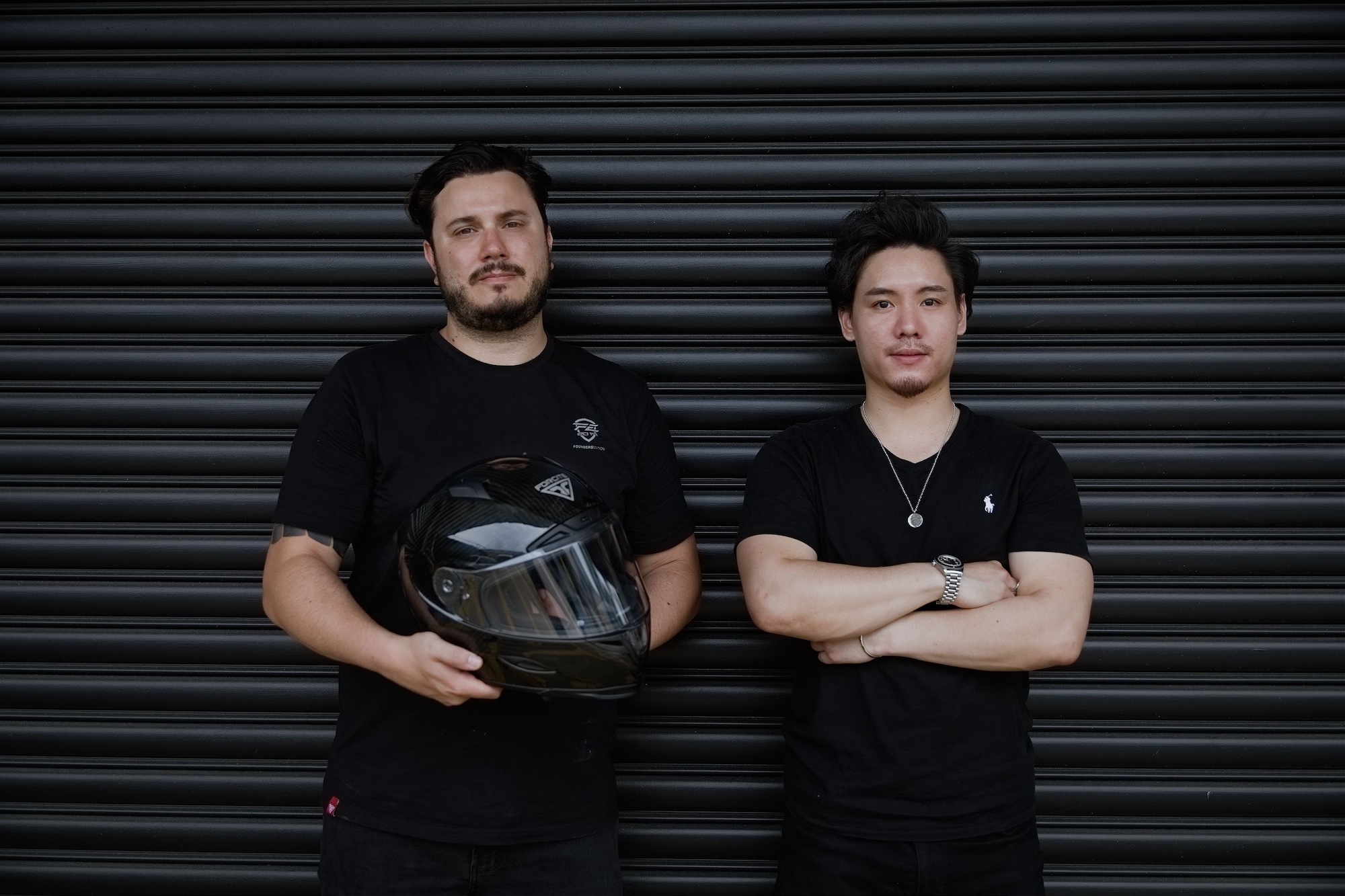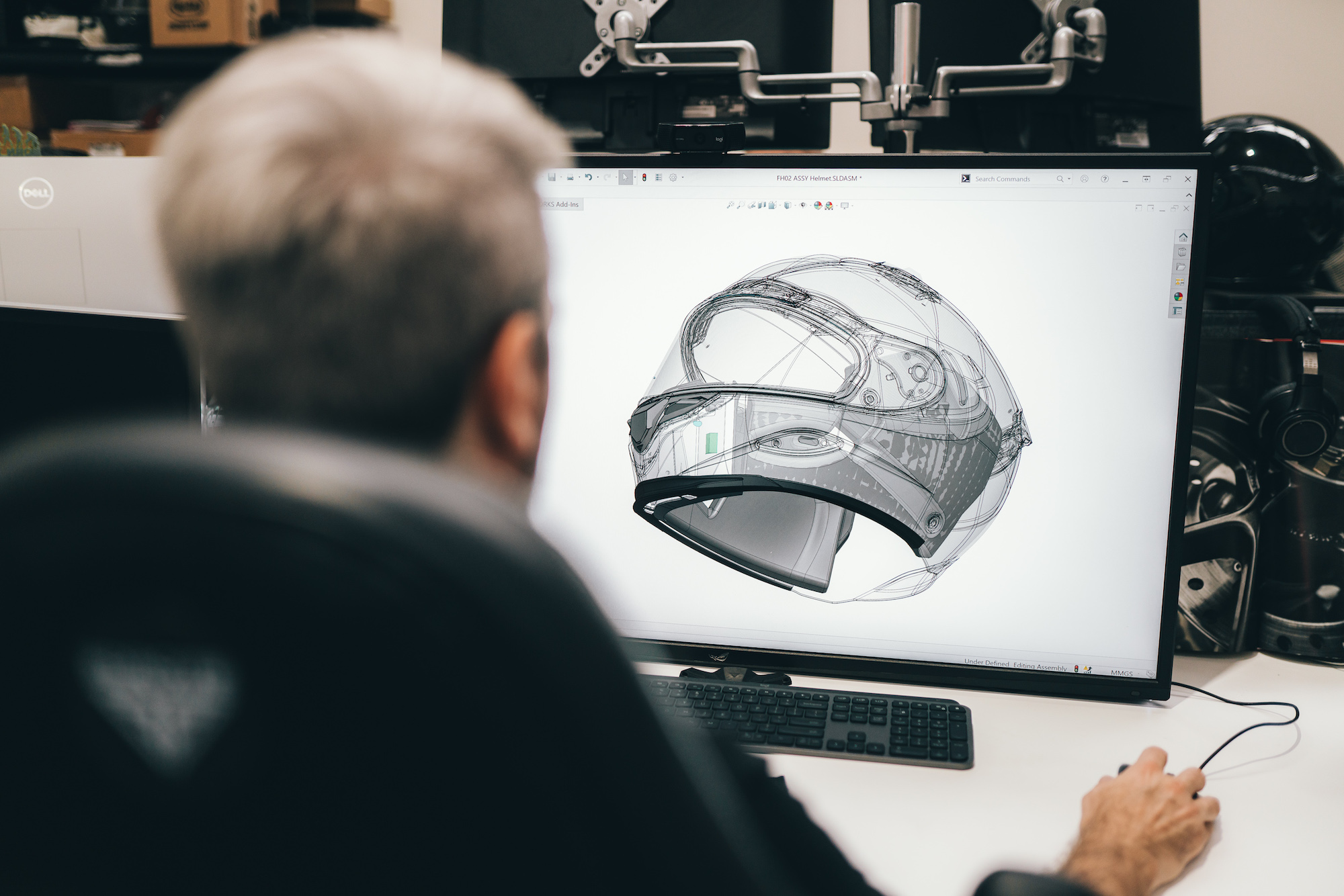Whither, Skully? The Indiegogo darling of a smart helmet company made all sorts of promises in 2014 and even shipped a few lids to early backers before getting lost on the way to market and disappearing into a cloud of misplaced hype and undelivered promises.
Nearly a decade later, another company called Forcite is back making many of the same promises: a smart helmet that is more digital companion than safety device, which can deliver integrated navigation with visual and auditory prompts.
Forcite, though, is skipping the ugly crowdfunding bit and is instead working directly with distributors. The company has already shipped thousands of MK1S smart helmets and, yes, its technology actually works.
But that’s just the beginning of a journey for this Australian startup working to create a platform that will, it hopes, become an integral part of motorcycle safety.
Inspired by a crash

Forcite was founded a decade ago, initially dabbling in various wearable technologies like in-helmet cameras for American football players. The move toward smart helmets started in 2019, according to CEO and co-founder Alfred Boyadgis.
“I had a motorcycle accident and wanted to create a technology that wasn’t just about passive safety or impact, something that could predict what was ahead on the road, thus changing the decision,” Boyadgis said in a recent interview.
He was also inspired by the GoPro craze. “Everyone started to use these action cameras on the front of their helmet, com-sets on the side of their helmet,” Boyadgis said. “These things increase the rotational velocity of the helmet.”
In a crash, more rotational velocity on a helmet can mean greater forces transferred to the brain within. Keep everything within the shell of the helmet, and that force is reduced.
Forcite’s in-house team started iterating on design ideas but soon turned to the wisdom of the crowd.
“We put together a group of 8,000 riders, an online test pilot club — it was on a Facebook page,” Boyadgis said. “We got those riders together and started talking about the technology which they use. So, you know, how they use the dash cameras, the things they don’t like about how they use com-sets, how they use audio. And then this new layout, which was, like, how do they receive information in an effective way?”
Motorcycling requires far more concentration than driving a car. A moment’s distraction can be fatal, and so the helmet’s UI had to be minimal.
The Forcite team ultimately nixed early ideas of including an augmented reality display of the sort found in the Skully AR-1.
Nuts and bolts

At its simplest, the MK1S is a helmet with an integrated Bluetooth audio connection, including speakers positioned over the ears. This means that riders can take calls, listen to music or get navigation instructions provided to the helmet wirelessly from the phone.
Many manufacturers now sell helmets with integrated Bluetooth functionality. What’s novel in the MK1S is a row of RGB LEDs inside the helmet above the chin bar. These glow upward, providing simple visual cues to the rider, all driven by the smartphone app. A green sweep from left to right means to make a right turn, for example. An inward sweep of orange means an accident ahead. A quick blink of red means the camera is activated.
That 1080p camera is built into the chin and can be used to automatically record incidents. It can also be manually toggled for highlights, which are stored on a microSD card. A separate, wireless controller mounts to the handlebars of the bike and allows the rider to toggle the camera, phone and navigation with a thumb press. For now, that’s the only way to give the helmet commands while on the bike.
While the electronics are within the shell of the helmet, including a rechargeable, ceramic battery, they do not compromise the crucial foam that actually protects the rider’s head. This design not only ensures the maximum possible safety and performance in various international helmet certifications, but it also allows an element of reuse. Should a helmet be damaged in a crash or otherwise, the electronics can be ported over to a replacement.
This could reduce costs for some in the long-term. The upfront cost, however, is significant.
A new Forcite MK1S costs $1,099 in the United States. That compares to about $600 to $800 for a top-shelf helmet made by leading manufacturers like Shoei and Arai — manufacturers that Boyadgis and co tried to partner with.
“So, we actually went around to a lot of manufacturers asking them if they wanted to build one, and all of them were, like, ‘No, we’re very happy with the margins that we make on motorcycle helmets,’” he said.
Predictive aspirations
Most of the MK1S’s functionality is driven by the Forcite app, which for now draws its data from Here Technologies. Developers are reworking the app to use Mapbox (said to offer “a smoother, more polished experience” according to a Forcite rep). The Forcite app provides navigation and gives warnings of debris, crashes and even police, which are communicated to the rider via voice prompts and that strip of LEDs.
Interestingly, those in-helmet alerts work even if the rider isn’t actively navigating.
“It can endeavor to provide you with something that’s coming up on a realistic route ahead, not something that’s on a parallel road or on a road that’s disjunct from your current graph network,” Tom Larcher, Forcite’s senior development manager, said.
That’s just the beginning, according to Larcher. “Predicting a corner that is particularly hazardous is a great one,” he said, indicating that the app will soon look at factors like road conditions, historic incidents and even the motorcycle’s current speed, then warn riders if a given stretch of road is dangerous.
“Predictive AI will be used for that aspect of things,” Larcher said, successfully delivering the hottest buzzword of the moment during our interview.
The ultimate integration

The long-term goal is to integrate not just the helmet and smartphone, but also the bike itself. Right now, most motorcycles are raw, simple machines compared to the rolling data factory of a modern car — software-defined vehicles with Ethernet backbones collecting hundreds of data points in real time.
Motorcycles, per Boyadgis, will get there soon.
“There’s definitely more sensors going on to bikes,” he said. “Advanced awareness systems will definitely become a common thing across the entire industry. We want to be that standardized interface.”
Forcite is working to define a new protocol for this kind of connectivity, something more reliable than the typical Bluetooth interfaces used for wireless accessories. Standards, though, are only as useful as those who support them.
For now, Forcite reps declined to identify which manufacturers are onboard for this idea, saying only that they’ve partnered with two brands for “deeper integration.”
Forcite has announced a partnership with Harley-Davidson Australia to “develop a next generation smart helmet and sensing system to preempt and identify hazards, such as debris and other road users and alert riders so they can take evasive action.”
In the world of motorcycling, it doesn’t get much more significant than H-D.
CEO Boyadgis says we won’t see this technology on motorcycles until 2026 at the earliest and hopes to integrate the necessary protocols into Forcite’s helmets as soon as next year.
“What we’re trying to do is work out a way where we get permission from a few manufacturers, both Japanese and Italian, to be able to pair with their bikes without something that they’re selling,” he said.
Next-gen bells and whistles
Other forthcoming advances will be more focused on lifestyle, including an in-helmet voice assistant capable of handling commands like, “Hey, Forcite: contact the first four people I know who ride a Ducati in my area, and then make a route that utilizes that style bike so we all meet up at a Mexican restaurant in time for lunch.”
Boyadgis wants to deploy this “collaborative ride experience” within the next two years, where the helmet becomes a real partner on the bike.
Forcite’s physical offerings will also evolve, including new models optimized for different types of riding, like a retro-styled helmet for cruisers, a flip-up model for the touring crowd and a visored adventure-style helmet.
Markets and money
To get there, the company will need to raise funds. Forcite closed AU$6.6 million in funding in December to drive the expansion into U.S. distribution. The company is now moving into a Series B capital round to raise capital that will fund those future helmet designs as well as the necessary research and development for all those app advancements.
Forcite is focused particularly on the U.S. market and plans to ship more than 10,000 units next year. The brand has already shipped 5,000, roughly 3,000 going to the company’s home Australian market.
But, Boyadgis says, the potential is to go much higher: “Let’s take a brand like an Arai or a Shoei across the United States; they’re selling in excess of, like, 50,000 units. So, that’s where we want to get to.”
The question, though, is whether Forcite’s more high-tech, high-price lids will speak to the same audience as the simple, comfortable, relatively affordable helmets from familiar, respected brands.
Motorcycling is, for many, a rejection of the complexity and claustrophobia of motoring.
Even Boyadgis has simplified his own daily Forcite experience, using it as a dashcam but not using it for navigation. “I do have it connected in the background, but I only have, like, police and speed camera alert — not that I speed or anything. But, they are pretty useful things if I’m going around a bend or something and I need to slow down. So, it really depends on, like, how much you want to use it, right?”
Whether Forcite can challenge the established brands or convince traditional motorcyclists to spend more money remains to be seen. However, there are early indications that Forcite is on the right track. The excitement around the failed Skully AR-1 product showed there’s an appetite for a smarter helmet. And the hunger still appears to be intact; Forcite’s shipments have already outpaced Skully’s.






























Comment